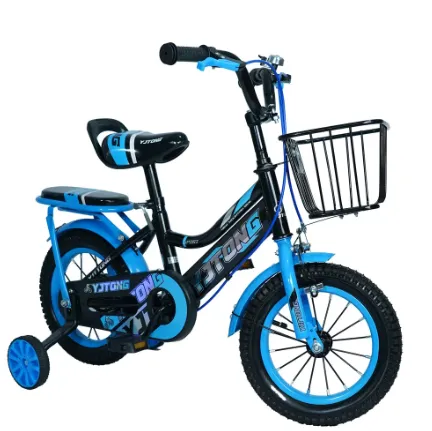Tricycles for Babies and Kids: Safe, Fun, and Built for Growth
One of the most iconic childhood experiences is learning to ride a tricycle. Whether it's a basic baby tricycle or an advanced tricycle for kids with gears and gadgets, these three-wheeled wonders are more than just toys—they’re tools for learning, balance, and confidence.

In this guide, we’ll explore the benefits of tricycles for different age groups, what to look for when choosing a tricycle for baby, and the growing variety of options available for parents, retailers, and distributors.
Why a Tricycle Is a Great First Ride
Before most kids are ready for bikes or scooters, a tricycle for baby offers a stable, low-risk way to develop motor skills. These three-wheelers help young children build strength, coordination, and confidence—without the need to balance like on a bicycle.
Key benefits of tricycles for babies and toddlers:
Develops leg strength and gross motor skills
Teaches steering and spatial awareness
Encourages outdoor activity and independence
Builds confidence through physical milestones
Safe, stable design reduces tipping risk
Whether it’s for indoor use or outdoor fun, tricycles are a trusted way to help little ones enjoy movement and exploration.
Choosing the Right Baby Tricycle
Not all tricycles are built the same. A well-designed baby tricycle should be safe, easy to maneuver, and sized appropriately. Here are some essential features to consider:
1. Age-Appropriate Design
For babies aged 1 to 2 years, choose low-to-the-ground models with wide wheels and footrests.
For toddlers aged 2 to 3, look for trikes with pedals, steering support, and harnesses.
2. Safety Features
3-point or 5-point harnesses for added security
Guard rails to keep babies from slipping out
Anti-tip design with wider rear wheelbase
Durable, non-toxic materials
3. Parental Control Handle
Many modern baby tricycles include a detachable push handle, allowing parents to guide or control the trike. This is perfect for early stages when the child is still learning to pedal or steer.
4. Convertible Trikes
Some trikes grow with the child, offering multiple stages:
Stage 1: Push trike (parent-guided)
Stage 2: Learning trike (with pedals)
Stage 3: Independent trike (full control to the child)
These are great long-term options that save parents money and space.
Popular Features in a Tricycle for Kids
As kids grow, so do their riding needs. A good tricycle for kids aged 3 to 5 typically includes:
Larger frame and pedal-based motion
Bell or horn for fun and safety
Foldable or detachable parts for easy storage
Storage baskets or seats for toys
Some advanced models even offer chain-driven pedals, hand brakes, or canopy shades for sun protection. While these aren’t necessary, they add functionality and make riding more enjoyable.
Materials to look for:
Metal frames offer durability but can be heavier.
Plastic trikes are lighter and colorful, best for younger toddlers.
Rubber wheels are quieter and suitable for indoor use, while foam or air tires offer better shock absorption outdoors.
Indoor vs. Outdoor Use
Indoor tricycles (usually smaller with rubber or EVA wheels):
Best for carpet or hardwood floors
Quiet and non-marking
Lightweight and compact
Outdoor tricycles (typically larger with air or foam wheels):
Designed for sidewalks, parks, and driveways
Better traction and comfort on uneven surfaces
Often weather-resistant and more rugged
Knowing where your child will ride most helps you choose the right model.
Pricing and Value
Prices vary depending on brand, features, and materials:
Basic baby tricycles: $30–$60
Convertible models: $60–$120
Premium trikes with features: $100–$250
Wholesale tricycles (bulk orders): As low as $10–$25 per unit
Bulk buyers can reduce costs by partnering with factories or distributors who offer OEM/ODM services and private labeling.
Tricycle Safety Tips for Parents
Always supervise young children when riding, especially outdoors.
Use helmets even on tricycles—it's a good habit to build early.
Stick to flat, obstacle-free areas.
Inspect wheels, seat, and handlebars regularly for loose parts.
Avoid steep slopes, uneven paths, or stairs.
Tricycle FAQs
Q1: What age is best for a baby tricycle?
A: Most baby tricycles are designed for children aged 1 to 3 years. Always check the height and weight guidelines before purchasing.
Q2: Can a tricycle help my child learn to ride a bike?
A: Yes. Riding a tricycle for kids helps develop coordination, steering, and pedaling skills that translate to biking later.
Q3: What’s the difference between a baby tricycle and a toddler trike?
A: Baby tricycles are push or foot-to-floor models with safety harnesses. Toddler trikes typically include pedals and more independence.
Q4: Are there foldable tricycles?
A: Yes. Some models are designed to fold for storage or travel, making them ideal for urban living or families on the go.
Q5: Do tricycles come with warranties?
A: Many reputable brands offer 6- to 12-month warranties. Check seller policies, especially when ordering online or in bulk.
-
Baby Balance Bike OEM Service – Kids No-Pedal, LightweightЖаңалықтарNov.10,2025
-
OEM Kids Bike Children Bicycle – Cheap Wholesale BicyclesЖаңалықтарNov.10,2025
-
Kids Bike New Model 12–18 inch Boys & Girls Bike, AdjustableЖаңалықтарNov.10,2025
-
China Cheap Price Safe Kids Bike for 10yo w/ Training WheelsЖаңалықтарNov.10,2025
-
China CE-Certified Kids Balance Bike, Guaranteed QualityЖаңалықтарNov.10,2025
-
Colorful Outdoor Flashing Carton Children Scooter for KidsЖаңалықтарNov.10,2025
-
Best Price Kids Balance Bike – Superior Quality, No PedalsЖаңалықтарNov.10,2025








